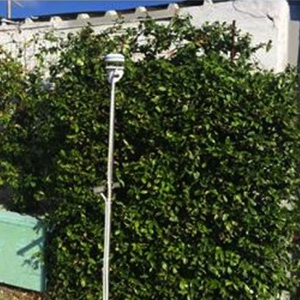A nature-based system for improving Mediterranean buildings’ performance: contribution to energy saving by heat transfer reduction and influence of climatic parameters

Published:20 February 2023
Abstract Views: 1221
PDF: 469
HTML: 8
HTML: 8
Publisher's note
All claims expressed in this article are solely those of the authors and do not necessarily represent those of their affiliated organizations, or those of the publisher, the editors and the reviewers. Any product that may be evaluated in this article or claim that may be made by its manufacturer is not guaranteed or endorsed by the publisher.
All claims expressed in this article are solely those of the authors and do not necessarily represent those of their affiliated organizations, or those of the publisher, the editors and the reviewers. Any product that may be evaluated in this article or claim that may be made by its manufacturer is not guaranteed or endorsed by the publisher.
Similar Articles
- Daniele Torreggiani, Alberto Barbaresi, Francesca Dallacasa, Patrizia Tassinari, Effects of different architectural solutions on the thermal behaviour in an unconditioned rural building. The case of an Italian winery , Journal of Agricultural Engineering: Vol. 49 No. 1 (2018)
- Gabriella Impallomeni, Francesco Barreca, Agrivoltaic systems towards the European green deal and agricultural policies: a review , Journal of Agricultural Engineering: Vol. 56 No. 1 (2025)
- Maria Elena Menconi, Massimo Chiappini, Jan L.M. Hensen, David Grohmann, Thermal comfort optimisation of vernacular rural buildings: passive solutions to retrofit a typical farmhouse in central Italy , Journal of Agricultural Engineering: Vol. 48 No. 3 (2017)
- Francesco Barreca, Giuseppe Modica, Salvatore Di Fazio, Viviana Tirella, Raimondo Tripodi, Carmelo Riccardo Fichera, Improving building energy modelling by applying advanced 3D surveying techniques on agri-food facilities , Journal of Agricultural Engineering: Vol. 48 No. 4 (2017)
- Alessandro Toccolini, Simone Felisari, Paolo Stefano Ferrario, Design of green spaces located below the urbanised level. Themes, problems and solutions applied to a case study , Journal of Agricultural Engineering: Vol. 46 No. 4 (2015)
- Alvaro Marucci, Danilo Monarca, Andrea Colantoni, Enio Campiglia, Andrea Cappuccini, Analysis of the internal shading in a photovoltaic greenhouse tunnel , Journal of Agricultural Engineering: Vol. 48 No. 3 (2017)
- Alvaro Marucci, Danilo Monarca, Massimo Cecchini, Andrea Colantoni, Andrea Cappuccini, Analysis of internal shading degree to a prototype of dynamics photovoltaic greenhouse through simulation software , Journal of Agricultural Engineering: Vol. 46 No. 4 (2015)
- Marzia Quattrone, Giovanna Tomaselli, Lara Riguccio, Patrizia Russo, Assessment of the territorial suitability for the creation of the greenways networks: Methodological application in the Sicilian landscape context , Journal of Agricultural Engineering: Vol. 48 No. 4 (2017)
- Giovanna Calia, Vittorio Serra, Antonio Ledda, Andrea De Montis, Green infrastructure planning based on ecosystem services multicriteria evaluation: the case of the metropolitan wine landscapes of Bordeaux , Journal of Agricultural Engineering: Vol. 54 No. 4 (2023)
- Maria E. Menconi, David Grohmann, Piero Borghi, Dynamic thermal simulation on retrofitting scenarios for semi-extensive sheep farms , Journal of Agricultural Engineering: Vol. 45 No. 2 (2014)
You may also start an advanced similarity search for this article.

 https://doi.org/10.4081/jae.2023.1520
https://doi.org/10.4081/jae.2023.1520 











